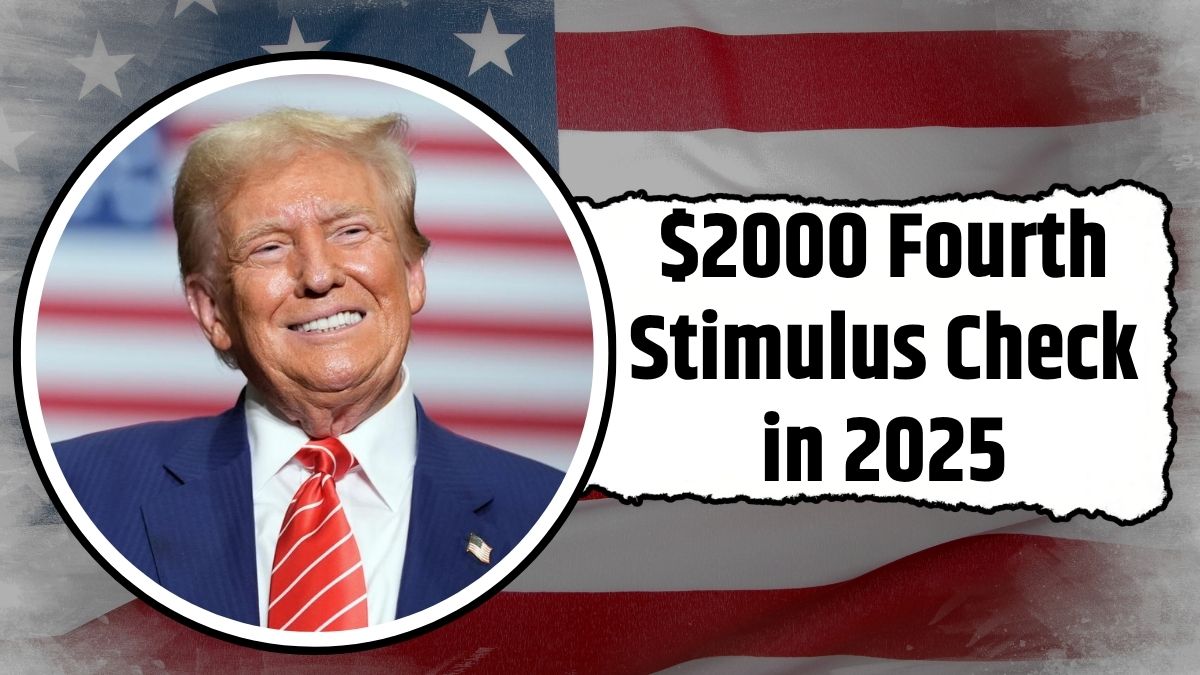The ever-rising waves of inflation have broken the backs of millions of American families. The prices of milk, bread, rental housing, transportation, healthcare, and daily groceries have climbed so high that for many, survival has become a month-to-month struggle. Although the U.S. government has introduced tax cuts and temporary reliefs in recent years, economic instability remains a pressing concern.
Amid this uncertainty, conversations around a fourth federal stimulus check have resurfaced. Lawmakers in Washington, D.C. are now seriously considering this new round of direct financial support, with a proposed amount of $2,000 per eligible adult. While the bill has not yet passed into law, growing public pressure and economic hardship have placed it at the center of current policy discussions.
Who Would Qualify? (Eligibility Criteria for Fourth Stimulus Check)
If the proposal is approved, the eligibility guidelines are expected to follow the same framework as previous stimulus checks. The IRS will use information from the most recent tax returns or existing federal benefit records to determine who qualifies.
You may be eligible if:
- You are a single filer earning less than $75,000 annually
- You are a married couple with a combined income under $150,000
- You file as head of household with income up to $112,500
- You have dependent children, elderly relatives, or disabled household members
- You currently receive Social Security (SSA), SSI, or SSDI benefits
This structure ensures that financial help reaches the most vulnerable households, especially those with limited or fixed income sources.
Why Is Another Stimulus Check Needed in 2025?
Even though inflation has eased slightly by mid-2025, its impact on everyday life is still being felt. From rising food prices to record-high rents and increased healthcare costs, millions are struggling to stay financially stable.
In this context, the fourth stimulus check is more than a relief payment—it’s a necessary intervention. For many families, it could serve as a lifeline to cover basic expenses like housing, groceries, fuel, and utilities.
Moreover, it sends a strong message: that the government recognizes the economic pain faced by ordinary citizens and is actively seeking ways to provide relief.
Most Affected Groups: Seniors, Disabled Americans, and Low-Income Families
Although some adjustments were made to Social Security payments in the form of Cost-of-Living Adjustments (COLA), these increases have not kept pace with the rising costs of essentials.
- Seniors often live on fixed incomes and face difficulty affording prescription medications and housing.
- Disabled individuals deal with both physical challenges and financial pressure, often requiring specialized care or equipment.
- Low-income families, especially those with children, are facing higher grocery bills, school expenses, and energy costs.
For these groups, a fourth stimulus check could mean the difference between making ends meet and falling deeper into financial hardship.
Declining Consumer Spending Hurts the Economy
One major consequence of inflation and reduced purchasing power is a drop in consumer spending. When people stop shopping or cut back on essentials, it creates a ripple effect across the economy:
- Small businesses lose customers
- Local services face declining revenues
- Job losses begin to increase in retail and service sectors
The fourth stimulus check is seen as a way to inject spending power back into the economy, reviving demand, boosting sales, and helping prevent a wider economic slowdown.
How Much Could You Get? (Proposed Amount and Dependent Bonus)
According to the proposal under consideration:
- Each eligible adult could receive a direct payment of $2,000
- Additional payments of $500 to $1,000 per dependent may be added
This means that a family of four could potentially receive $4,000 to $6,000, depending on the final legislative details.
Distribution Timeline:
As of June 2025, no law has been officially passed. However, if Congress approves the plan in late 2025, the distribution could begin by the end of 2025 or early 2026.
Those who have already opted for direct deposit with the IRS will likely be the first to receive payments, while others may receive paper checks or prepaid debit cards.
What If the Fourth Stimulus Plan Doesn’t Pass?
There is always a chance that the proposal may not clear Congress. However, the federal government still has other relief programs in place that can provide immediate or alternative support:
- Expanded Child Tax Credit – Direct payments to families with young children
- LIHEAP (Low Income Home Energy Assistance Program) – Helps cover heating and cooling costs
- Emergency SNAP Benefits – Additional support for groceries
- Rental Assistance & Housing Vouchers – Helps prevent eviction or homelessness
- Unemployment Benefit Extensions – For those who lose their jobs or face reduced hours
These alternatives show the government’s intent to support struggling households, even if a blanket stimulus check isn’t approved.
How to Prepare Now in Case the Check Is Approved
If you want to be ready for the payment, it’s important to take some proactive steps:
- File Your 2024 Tax Return: If you haven’t filed yet, do so soon. Your eligibility and payment will likely be based on this return.
- Enroll for Direct Deposit: Visit the official IRS website and provide your bank account details to avoid delays.
- Monitor Official IRS Tools: Use the “Get My Payment” tracker if it is reactivated once the program is announced.
- Stay Alert for Scams: Rely only on official government websites (like IRS.gov and USA.gov) for updates. Avoid sharing personal details via email or text from unknown sources.
These steps can ensure that you are among the first to receive payment—if and when the program goes live.
A Message of Support in Uncertain Times
While the fourth stimulus check has not yet been approved, the public’s growing demand and the real financial need across the country have kept the pressure on lawmakers.
This proposed check is more than a policy—it’s a symbol of trust, a tool for survival, and a step toward restoring dignity for millions who work hard but still struggle to get by.
As we await a final decision, it’s important to remain informed, keep documents updated, and take the right steps to ensure you don’t miss out.
FAQs
Q1. Is the fourth stimulus check officially approved yet?
A. No. As of now, Congress has not approved the $2,000 fourth stimulus check proposal.
Q2. Who might qualify for the fourth stimulus check?
A. Likely individuals earning below $75,000, married couples earning under $150,000, heads of household earning up to $112,500, and beneficiaries of Social Security, SSI, or SSDI.
Q3. How much money could I receive?
A. The proposed amount is $2,000 per eligible adult, with an additional $500 to $1,000 per dependent.
Q4. When would payments be made if approved?
A. If passed in late 2025, payments could begin by the end of 2025 or in early 2026.
Q5. Is direct deposit the fastest method?
A. Yes. IRS direct deposit recipients will receive payments first. Others may get checks or debit cards later.









